Blog Log: 28 February 2010
 March 2, 2010
March 2, 2010

We had a really packed day at Hantu this weekend. With a full boat of divers, great fair weather, and heaps of critters sprinkled about the reefs. The visibility was very favourable at about 4meters at 15meters. That made finding stuff really easy, and it also saved me from getting claustrophobic! The dive began with us exploring the coral whips in the deep. Blog volunteer Jimmy Goh spotted this commensal shrimp on a gorgonian coral.
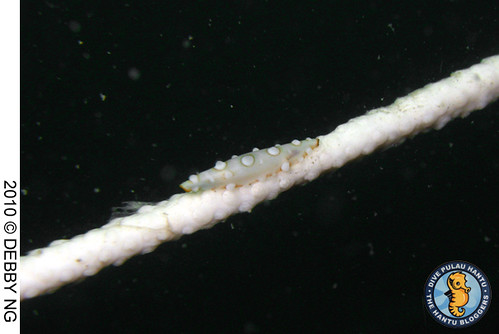
After which, I came across a handful of ovulids (allied cowries). There were as many as four Aclyvolva lamyi (above) on a single whip coral! I found a total of seven on the first dive. Ovulids are molluscs and are related to critters like snails.
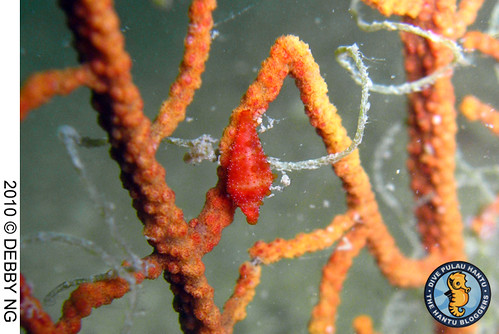
Then I found another ovulid on a small sea fan nearby. This might be from the genus Crenavolva.
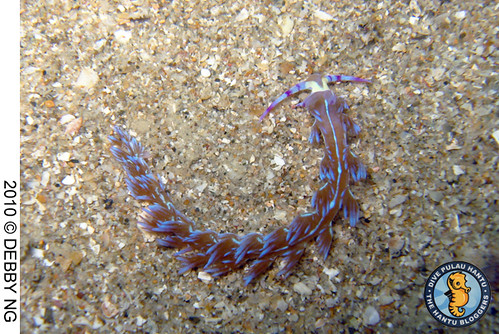
Something a little more common on our reefs is the Serpent Pteraeolidia Pteraeolidia ianthina.
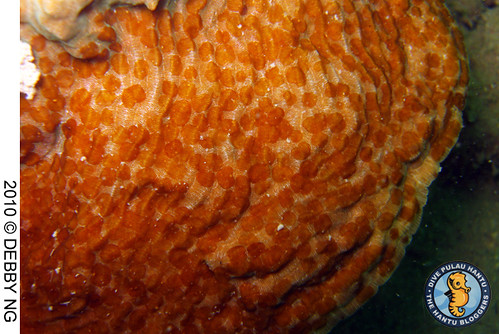
Few people notice the Acoel flatworms that cluster on top of some corals. These are tiny tiny flatworms that feed on the algae found on the coral. They don’t actually feed on the coral or harm it directly, however because they block out the light with their presence, they can cause bleaching in corals.
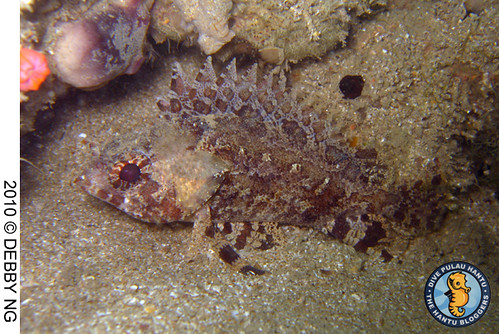
We spotted two False scorpion fishes on the first dive. They are so-called because they look like scorpionfishes but are actually from the grouper family.
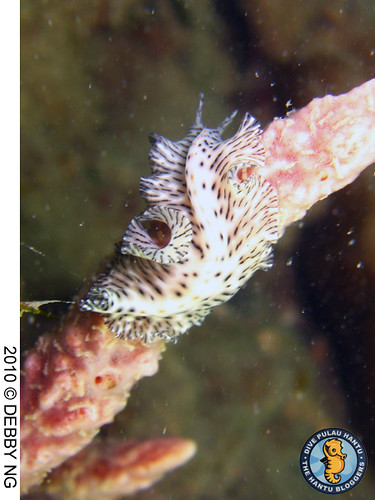
I was really pleased to come across this flatworm Maritigrella eschara creeping about on a pink branching sponge.

Another amazing flatworm we came across soon after was this palm-sized Pseudobiceros.

As for nudibranchs, I found this Painted hypselodoris Hypselodoris infucata trying to squeeze into a tiny crevice at the base of a small seafan. When it emerged, I realised it had a swollen belly, so it might have reached into the crevice to catch some prey. As soon as it got out, it started scuttling about the outcrop rather quickly, perhaps looking for its next meal, or trying to get away from us curious divers!
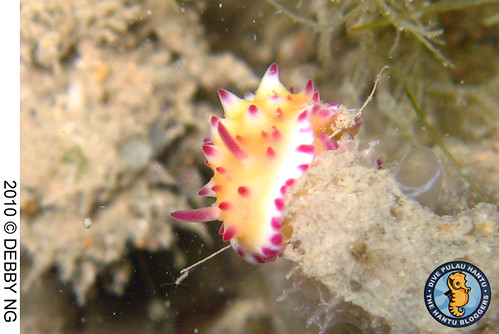
I was very excited to spot this Ornate cadlinella Cadlinella ornatissima as I’d not seen it in awhile. I think the last time we got a record of it was when Blog volunteer Cindy Tan took a picture of it.
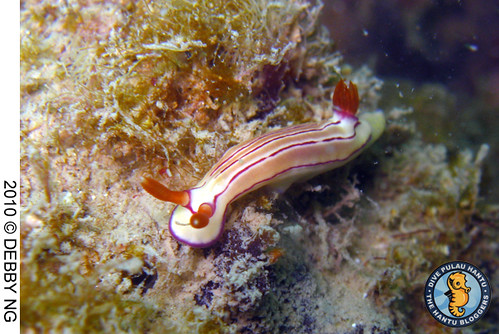
Funny enough, during the surface interval, we were going through some books and looking at nudibranchs. We were talking about which nudibranchs we have spotted at Pulau Hantu so far and Hypselodoris emma was mentioned. Right after we were talking about it, we went in for a dive and found ourselves one!
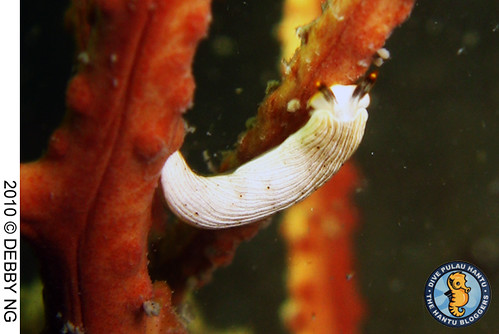
I didn’t manage to get too good a picture of this minuscule nudibranch that was creeping about on the seafan. From what I can make of it, my guess is that it’s Dermatobranchus sp.

My proudest photo of the day was of this sanddiver goby perched on a ripple of sand on the seabed. These guys are usually hiding in the sand. They tend to hover above these ripples in the seabed, hurriedly diving into the lose sand as soon as they sense a threat. This one dived into the sand several times, but finally got tired of us following it around and decided to give us a shot so we’d get off its case.

Speaking of creatures that are good at hiding, few creatures do it as well as cuttlefish. There were two cuttlefish bobbing about the reef, remaining absolutely still, but sometimes a small twitch gives their position away. Cuttlefish have keen eyes, thankfully, some divers have a good pair of eyes too!

The two cuttlefish were very busy hunting. With their superb camouflage, they remained as still as possible and kept their movements ever so delicate. As soon as they spotted a prey, they’d lift off gently from their crop and rapidly extend its two long tentacles, grabbing its pray and feeding it into its beaked jaws within a matter of seconds. As soon as that was done, it changed back to the colour of silt and came to rest on the reef again.

Another fascinating thing for me today (apart from the sanddiver goby) was that I learned about a new coral. I’ve probably seen this before, perhaps even taken it’s picture, but I never knew what it was. Thankfully, I brought it up to Ria Tan when I joined her for an intertidal walk after the dive. She made me count the polyps and told me that what I thought was a hard coral was infact a softcoral from this group called Octo corals. Apparently, the term isn’t even a definitive name for the family of corals as they encompass a massive variety of cnidarians that have tentacles that number 8 or sets of 8. There’s always so much to learn!
More pix at the Hantu Blog Gallery.
 Posted in
Posted in 



 content rss
content rss
March 9th, 2010 at 10:46 am
Hello
I have done just a few dives in pulau derawan,east kalimantan and was shocked by the damge from dynamite fishing.Do you know of any volunteer programs aimed at protecting the reefs in indonesia?I have looked online but havent found any.Any reply would be appreciated,thanks.
Dean
March 24th, 2010 at 3:02 am
Hi Dean, great that you want to participate in conservation work. There are plenty of opportunities to volunteer in Asia! You should get in touch with Conservation International and Coral Cay Conservation. WWF also has several coral conservation projects in the region. Good luck!